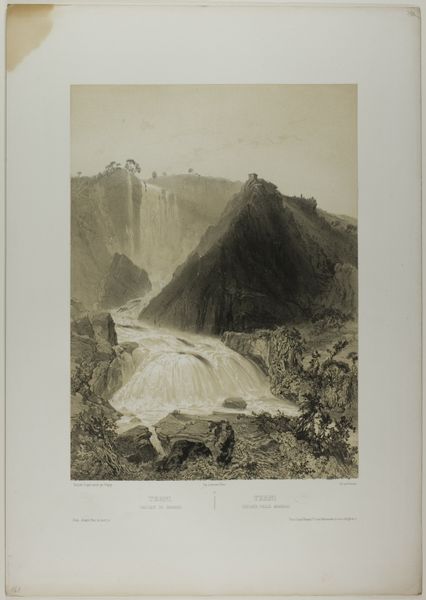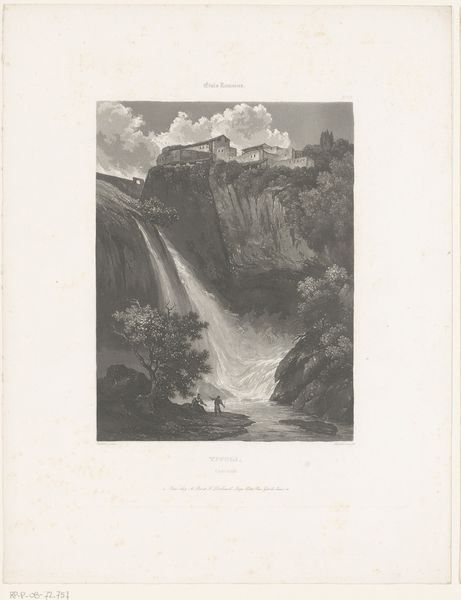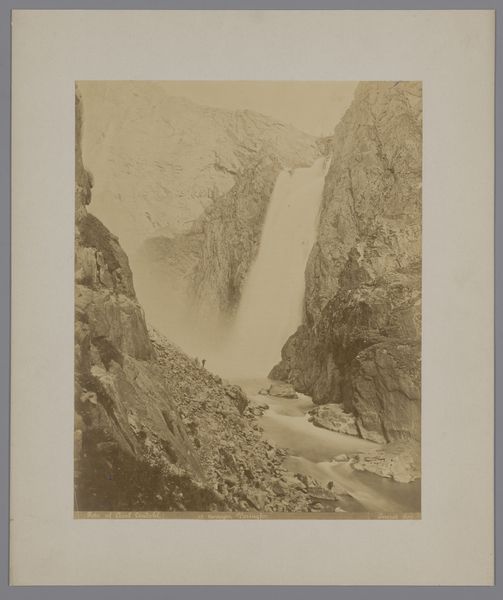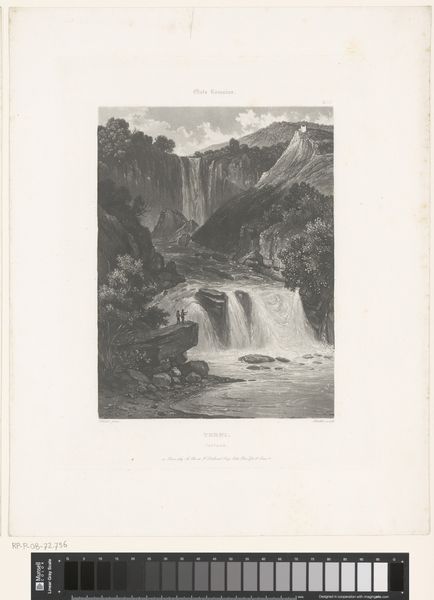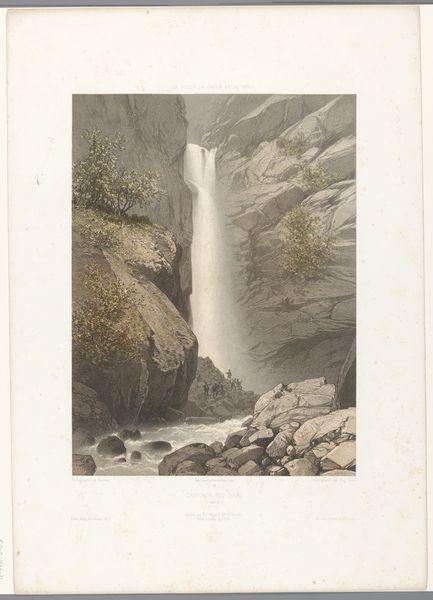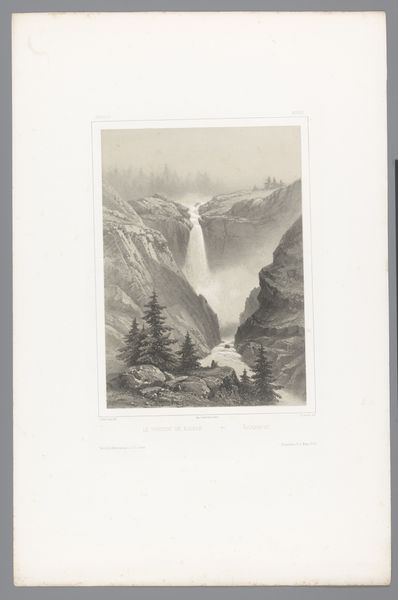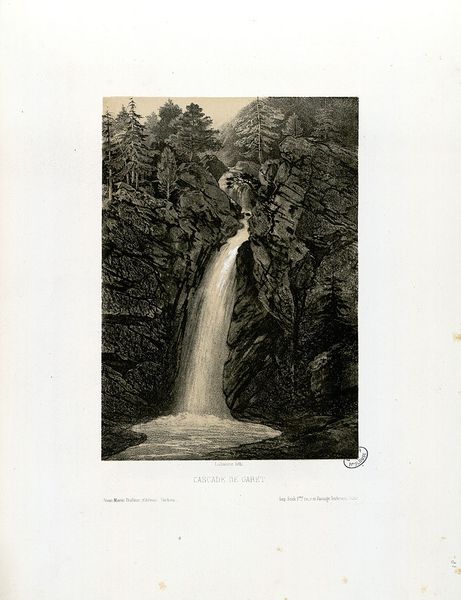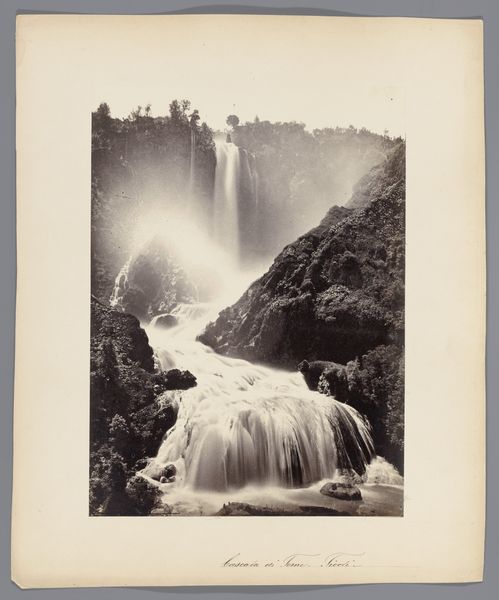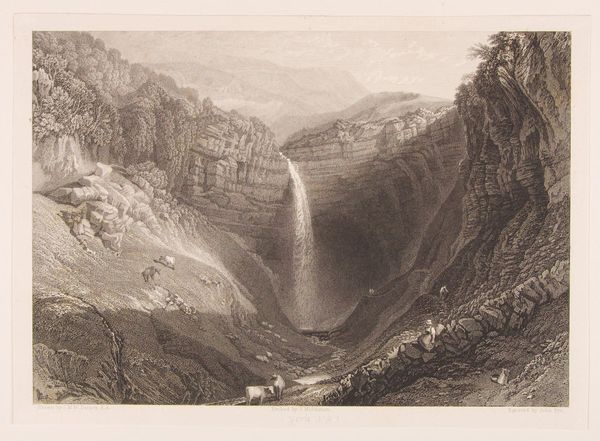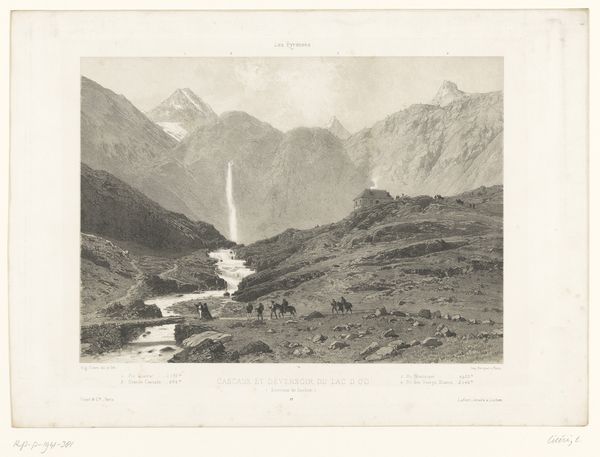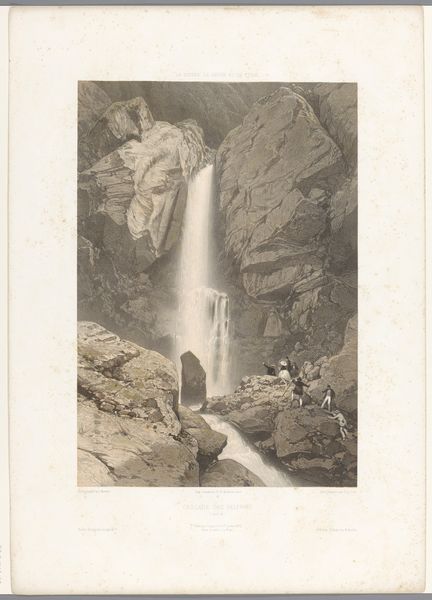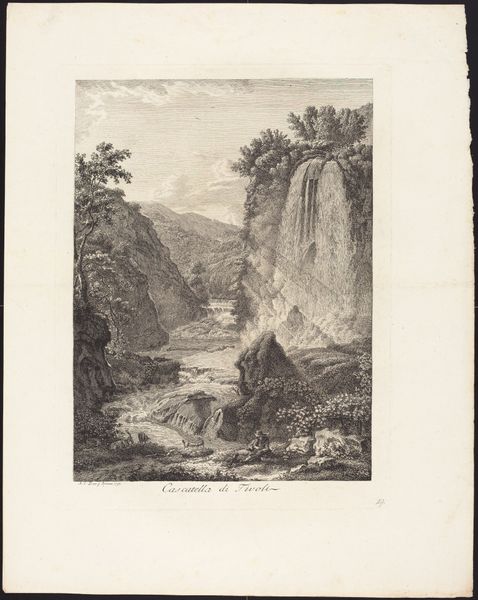
Waterfalls of Tivoli, plate eighteen from Italie Monumentale et Pittoresque c. 1848
0:00
0:00
drawing, lithograph, print, etching, paper
#
drawing
#
lithograph
# print
#
etching
#
landscape
#
paper
#
romanticism
Dimensions: 292 × 381 mm (image/tint stone); 394 × 566 mm (sheet)
Copyright: Public Domain
Editor: Here we have Nicolas Chapuy's "Waterfalls of Tivoli," a print combining lithography and etching on paper, created around 1848. It’s quite striking – the contrast between the dark, jagged rocks and the smooth, flowing water immediately grabs your attention. What elements stand out to you in this composition? Curator: Immediately, the careful balance achieved through contrasting textures arrests the eye. Note the deliberate arrangement: the cascading waterfalls offset by the solidity of the rocky foreground and the distant architecture. This interplay generates a certain tension and visual interest. Further, consider how light and shadow work together to emphasize the different spatial planes. What strikes you about how depth is created in this work? Editor: I think the layers – the foreground rocks, the waterfalls, then the mountains receding into the background – give a good sense of distance. It feels vast. The etching helps with that detail. Are there particular compositional techniques at play here? Curator: Indeed. The artist employs strategic blurring of forms in the background and varies the degree of contrast, manipulating light to guide the viewer's eye. This visual recession is further augmented by a subtle aerial perspective. Notice also the linear structure reinforced by the verticality of the falls and rock forms. Editor: That makes sense. I see now how the vertical lines guide your eye upward, drawing you into the distance. It's almost like a stage, meticulously constructed. Do you see this staged structure enhancing the viewing experience? Curator: Yes, that architectural quality creates an artificial yet engaging scenic vista. This artistic approach showcases the possibilities of pictorial structure, creating aesthetic value. The very nature of the composition underscores the careful formal planning inherent in the image. Editor: That's fascinating! It's less about a realistic depiction and more about the arrangement of forms. I initially focused on the landscape but now see that the artwork is meticulously constructed and has different structural depths, light quality and a carefully selected technique that create space, draw our eye, and make it all feel both natural and contrived. Curator: Precisely. Shifting perspective allows for an entirely novel appreciation of representational form.
Comments
No comments
Be the first to comment and join the conversation on the ultimate creative platform.
